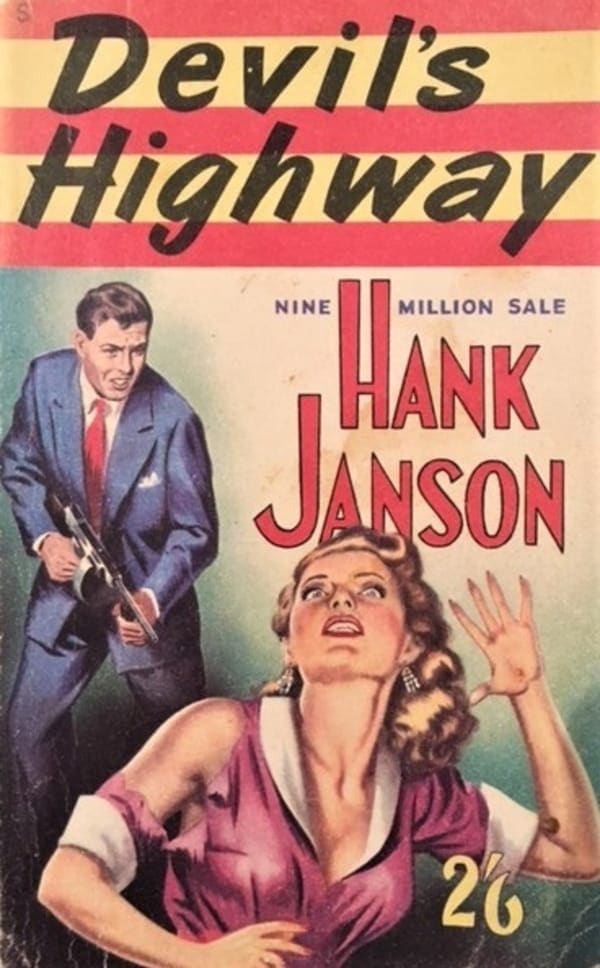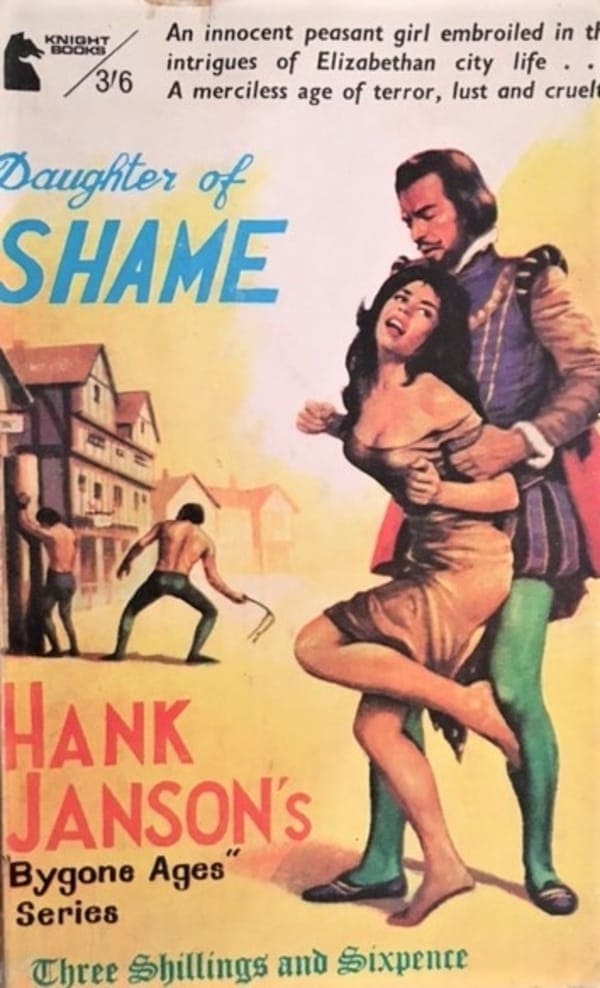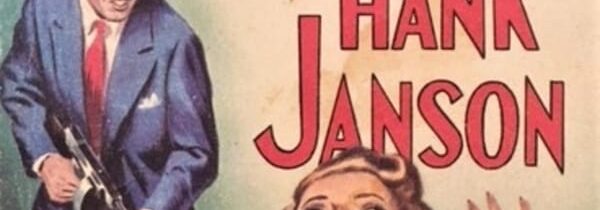TRASHY TUESDAY: DEVIL’S HIGHWAY by Hank Janson (Alexander Moring, 1956)

Hank Janson was the pseudonym adopted by prolific author Stephen D Frances when he created the Janson character in the 1940s. The Janson books, along with Peter Cheyney’s novels, were one of the first examples of the pseudo-American gangster tales written by British authors in the 1940s and 50s. Like the Carter Brown novels in Australia, the Janson books with their American settings proved to be very popular, even when they ran into trouble with the censors in the 1950s.
Over 250 novels appeared between 1946 and 1968 under the Janson byline, although few of them after 1959 were actually written by Frances.
Much of the appeal of the Janson books came from their lurid covers, which usually featured attractive young women in various stages of undress and often under threat. This was particularly true of the ones published by Alexander Moring between 1953 and 1957, many of which had terrific covers by the legendary Reginald Heade.
Devil’s Highway (1956) is one of Moring books, all of which are easily identified by the yellow and red stripes across the top of the cover. The book does not feature the Hank Janson character, but instead is a first person tale of a fictional American gangster, Ronald Boone, during the years of the Depression.
The cover art, which is not signed, is very typical of the Janson covers of this period. It may have been by Reginald Heade, who stopped signing his covers after the Hank Janson obscenity trial, but this is unlikely. Regardless of the artist it is a very striking cover, with the main focus on the dramatic terrified face of the woman, while in the background lurks a man with the ubiquitous American gangster Tommy gun. The convoluted facial features of the woman verge on the comical, but the small details of the earrings and the torn blouse are quite good. The man looks like a ‘Hollywood’ version of a 1920s gangster down to the neat suit, red tie and pocket handkerchief. The cover certainly does what it is intended to do, draw attention to the book, and is a good example of the ‘Good Girl Art’ covers of the 1950s.
A couple more less dramatic Janson covers from my collection:

This washed out early 1960s cover has a slightly psychedelic feel to it, but overall lacks the brio of the Alexander Moring covers

Daughter of Shame is one of the few entries in the short lived Hank Janson historical series: “Bygone Ages”. Despite being set back in the Elizabethan period of “terror, lust and cruelty”, it seems to offer the same sex and violence elements that made the modern Janson books so appealing! I like how the price of the book is written in supposedly old style font!


OMG! I look at these covers, and almost expect that the books will be graphic (so that readers can follow the pictures) rather than graphic (in the sex and violence sense).